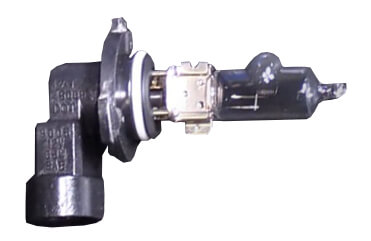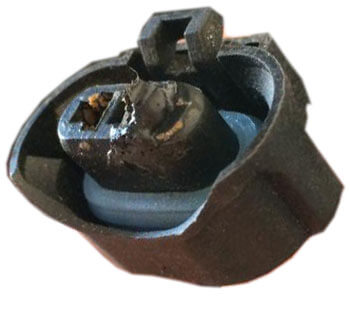Why headlights burn out quickly — causes of early bulb failure
9 Reasons Why Headlights Burn Out Quickly
Headlights usually last for years. In fact, regular halogen bulbs usually last around 1,00 -1,200 hours. If you’re replacing your headlights often, there’s something wrong, Here are the most common reasons why headlights burn out quickly.
1) Vibration can burn out headlights quickly
• If your headlight assembly isn’t securely fastened, the vibrations can cause the filament to fail early.
• Out of balance tires and high-speed vibration can cause bulbs to burn out early. The same applies to bent wheels, worn struts and worn suspension parts. A bumpy ride causes early filament failure.
2) Turning on your headlights before starting your engine can cause headlight bulbs to fail more often
Cranking the engine requires a lot of power which causes a fairly large voltage drop that dims the headlights. As soon as the engine starts and the alternator kicks in, you get a brief high-voltage spike. High voltage spikes and bulb filaments don’t mix.
3) Touching the headlight bulb during installation will cause headlight burnout

This is one reason why headlights burn out quickly. Don’t touch the glass with your hands. Skin oil causes the glass envelope to rupture when hot.
Halogen headlight bulbs and HID headlight bulbs are made with a special quartz glass envelope so they can withstand high temperatures. If you touch the glass, oil from your skin will adhere to the glass, causing a hot spot and uneven heating when the bulb is on. That uneven heating can cause the glass to break or bulge, shortening the life of the bulb. Always wear gloves or handle the bulb with a soft cloth or even paper towel when installing a new headlight bulb.
5) Cold weather can burn out headlights early
Bulbs create light by heating a filament. Bulb filaments become more brittle in cold weather and are more prone to breaking, especially if you drive on rough roads, roads with potholes, or your vehicle has a vibration issue.
6) Extra bright headlight bulbs have a shorter lifespan
If you’ve installed headlight bulbs that claim to be brighter or whiter, you should also know that those bulbs don’t have nearly the lifespan of normal bulbs or long-life bulbs. Here’s an example of different bulb lifespans in hours according to bulbfacts.com.
Headlight bulb lifespan — Standard headlight bulbs versus long lsife halogen bulbs
Sylvania Basic Halogen headlight bulb 1504 Lumens 1,134 hours
Hella Standard Halogen headlight bulb 1482 Lumens 1,205 hours
GE Standard Halogen headlight bulb 1458 lumens 2,074 hours
Brighter Performance halogen bulbs lifespan and lumens
Sylvania SilverStar Ultra Halogen headlight bulb 1626 lumens 458 hours
Sylvania SilverStar Halogen headlight bulb 1622 lumens 621 hours
Sylvania SilverStar zXe Gold Halogen headlight bulb 1345 lumens 667 hours
Sylvania SilverStar zXe Halogen headlight bulb 1448 lumens 744 hours
Philips Xtreme Vision 1586 lumens 802 hours
Philips Vision Plus Halogen headlight bulb 1613 lumens 997 hours
Philips White Vision Halogen headlight bulb 1411 lumens864 hours
Philips Diamond Vision Halogen headlight bulb 769 lumens 824 hours
GE Megalight Ultra Halogen headlight bulb 2036 lumens 585 hours
GE Megalight Halogen headlight bulb 1635 lumens 773 hours
7) High voltage shortens headlight bulb life
If your vehicle’s alternator is running at too high a voltage, that high voltage will burn out the headlight bulbs faster.
8) Bad or corroded connections shortens headlight bulb life

Reason #8 why headlights burn out quickly — corroded connections or a melted headlight connector
Corrosion on the contacts in the headlight bulb connector will cause the bulb to run hotter and that will reduce its lifespan.
9) Condensation inside the headlight assembly will reduce headlight bulb life
All composite headlight assemblies are made to breathe to accommodate expansion and contract from heat and cold. To prevent moisture from entering the headlight assembly, car makers seal the lens to the assembly and install a vapor barrier at the breathing port.
If you have condensation in your headlight assembly, either the lens sealant is leaking, the bulb isn’t properly seated in the housing, or the vapor barrier has been breached. Check the bulb to make sure it’s installed properly. If not, remove the bulb and use a home hair dryer to blow warm air into the headlight assembly to dry it out. Then install the bulb properly.
If moisture enters again, check for a leaking lens-to-headlight seal. You can try adding a sealant to stop further water migration, but most sealants degrade from UV exposure. In that case, your best bet is to replace the entire headlight with a new unit. Try finding a replacement headlight assembly at rockauto.com.
The same applies to a damaged vapor barrier.
©, 2020 Rick Muscoplat
Posted on by Rick Muscoplat